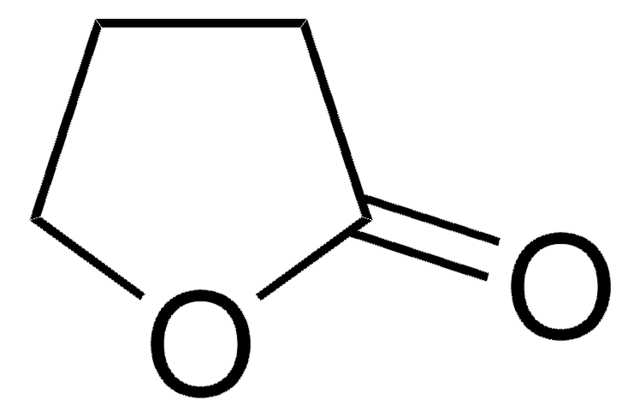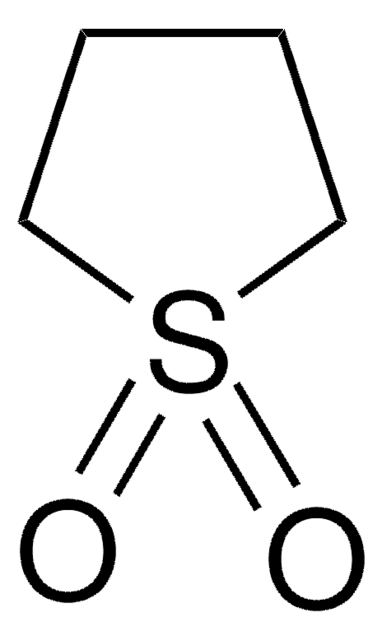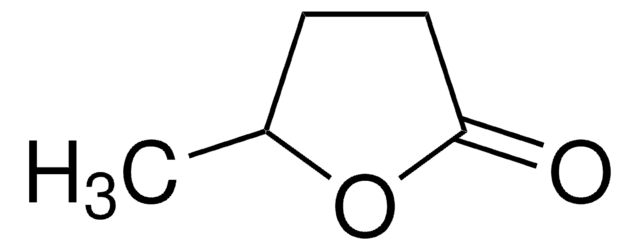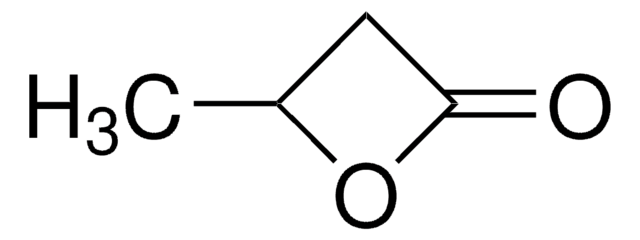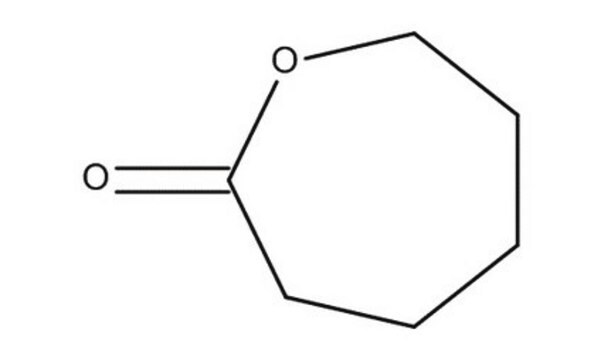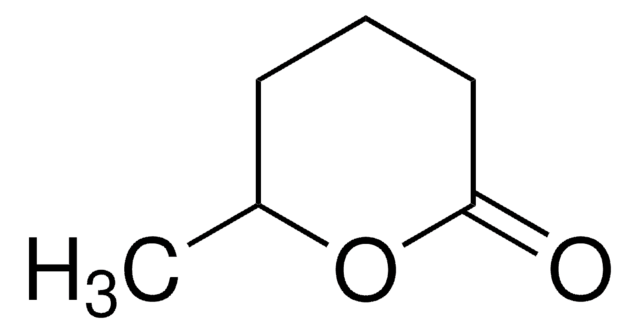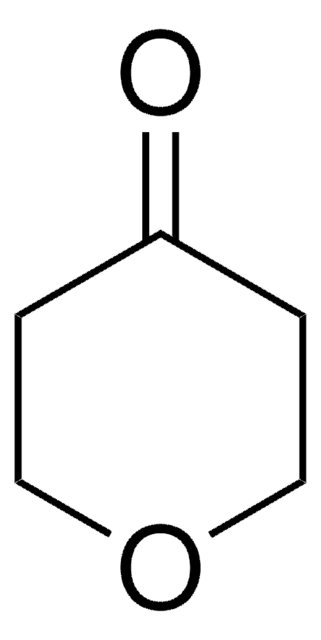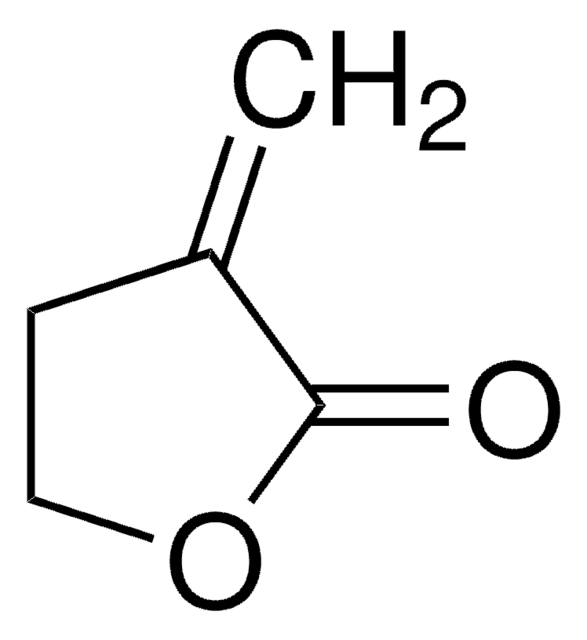Wichtige Dokumente
389579
δ-Valerolacton
technical grade
Synonym(e):
Tetrahydro-2H-2-pyranon
About This Item
Empfohlene Produkte
Qualität
technical grade
Qualitätsniveau
Form
liquid
Verunreinigungen
<25% polymer
Brechungsindex
n20/D 1.457 (lit.)
bp
226-229 °C (lit.)
58-60 °C/0.5 mmHg (lit.)
mp (Schmelzpunkt)
−13-−12 °C (lit.)
Dichte
1.079 g/mL at 25 °C (lit.)
Funktionelle Gruppe
ester
Lagertemp.
−20°C
SMILES String
O=C1CCCCO1
InChI
1S/C5H8O2/c6-5-3-1-2-4-7-5/h1-4H2
InChIKey
OZJPLYNZGCXSJM-UHFFFAOYSA-N
Suchen Sie nach ähnlichen Produkten? Aufrufen Leitfaden zum Produktvergleich
Verwandte Kategorien
Anwendung
It can also be used as a starting material in the synthesis of (+)-guadinomic acid , sodium δ-hydroxyvalerate , methyl δ-hydroxyvalerate , and 5-hydroxyvaleraldehyde.
Signalwort
Danger
H-Sätze
P-Sätze
Gefahreneinstufungen
Eye Dam. 1
Lagerklassenschlüssel
10 - Combustible liquids
WGK
WGK 1
Flammpunkt (°F)
233.6 °F - closed cup
Flammpunkt (°C)
112 °C - closed cup
Persönliche Schutzausrüstung
Eyeshields, Gloves, type ABEK (EN14387) respirator filter
Hier finden Sie alle aktuellen Versionen:
Besitzen Sie dieses Produkt bereits?
In der Dokumentenbibliothek finden Sie die Dokumentation zu den Produkten, die Sie kürzlich erworben haben.
Kunden haben sich ebenfalls angesehen
Unser Team von Wissenschaftlern verfügt über Erfahrung in allen Forschungsbereichen einschließlich Life Science, Materialwissenschaften, chemischer Synthese, Chromatographie, Analytik und vielen mehr..
Setzen Sie sich mit dem technischen Dienst in Verbindung.
